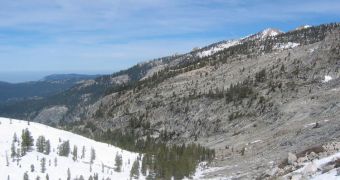A team of investigators led by University of Colorado in Boulder (UCB) expert Ernesto Trujillo found in a new study that forests at mid-elevation, between 1,980 and 2, 440 meters (6,500 to 8,000 feet), will be most severely affected by climate change.
In addition to higher temperatures, the phenomenon will also bring about a shift in precipitation patterns, as well as in the timing of snowmelt. These imbalances will eventually lead to droughts and water scarcity, and to the death of numerous trees.
The new investigation, which was co-funded by NASA, took a close look at the greenness level of forests in the western parts of the United States. They determined that this measure is directly correlated to fluctuations that occur in the year-to-year snowpack cover.
In order to conduct the new study, Trujilo and his team used both satellite and ground data. They were thus able to discover a very important threshold, marking the difference between mid-elevation and high-elevation forests.
At this boundaries, trees transition from being supported by moisture in the ground to being supported by the thin air, cold temperatures and intense sunlight. One of the things that enabled the new study was the access the team got to 26 years-worth of satellite data.
The information was collected by the Advanced Very High Resolution Radiometer (AVHRR) instrument aboard a satellite operated by the US National Oceanic and Atmospheric Administration (NOAA).
The long-term AVHRR data were cross-referenced with readings collected by the Moderate Resolution Imaging Spectroradiometer (MODIS) instrument, on the NASA Terra spacecraft.
“Our results provide the first direct observations of snowpack-forest connections across broad spatial scales,” explains Noah Molotch, a research scientist at the NASA Jet Propulsion Laboratory (JPL), and an assistant professor at UCB.
“Finding the tipping point between water-limited forests and energy-limited forests defines for us the region of the greatest sensitivity to climate change - the mid-elevation forests - which is where we should focus future research,” he adds.
Details of the new study, which was supported by the US National Science Foundation (NSF) as well, appear in a paper published in a recent issue of the top journal Nature Geosciences.

 14 DAY TRIAL //
14 DAY TRIAL //